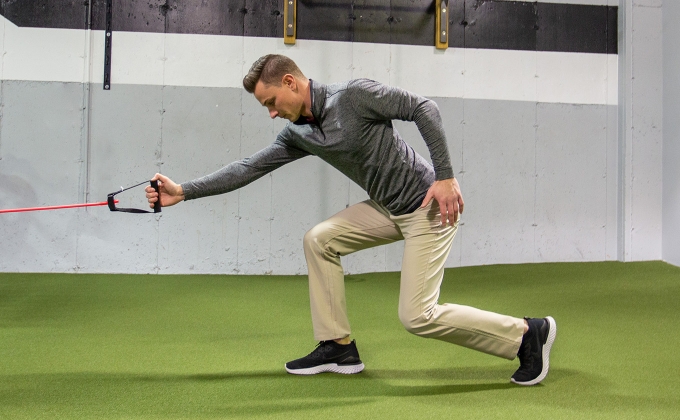Tyler Campbell: Function Dictates Form
Whether just taking up the game or playing at a high level week in and week out, the never ending journey of mastery is what makes those playing golf such unique athletes. The desire to improve drives all of us, so it is important that golf athletes understand the impact their physical function (or dysfunction) has on their ability to get better.
So what is function as it refers to the body? Very simply, each area of our body has a job to do. If a certain area of your body isn’t holding up its end of the deal, another area has to take over for it. As a result, that area is now doing a job it wasn’t meant to do and this altered pattern is what we refer to as “dysfunction.”
It’s not news that the ability to create separation between the upper body and lower body is beneficial in creating an efficient, powerful golf swing. Doing so, however, isn’t as easy as it sounds and it requires proper stability and mobility in the right areas to avoid causing undue stress on the body. The golf swing is a very repetitive motion. While this factor alone can lead to injury, if you're unable to separate your upper body and lower body properly while intending to do so in your golf swing, the liklihood of injury is even greater.
A model that is referenced often in the world of sports performance is the “Stability-Mobility Model” developed by esteemed Strength and Conditioning Coach Michael Boyle and renowned Physical Therapist Gray Cook. This model explains how the body is comprised of an alternating pattern of stable segments and mobile joints.
The function of the foot, ankle, and knee all play a role in the motion of other segments of the body, but there are three areas in particular that work together to allow the golf athlete to separate properly. These three areas include the hip, the lumbar spine (low back), and the thoracic spine (mid back).
Hip: As a ball and socket joint, the hip is made to move through a large range of motion in multiple planes. However, the modern day lifestyle of so many people (avid golfers included) turns those mobile hips into rigid, tight, immobile joints before long.
Thoracic Spine: Moving up the body, let’s skip the lumbar spine (low back) for a second and jump to the thoracic segment of the spine (mid back). Are you slouched over, rounding your back in a flexed position as you are reading this article at your desk or on your phone? It’s positions like these (and not enough of the others) that over time cause the spine to become more fixed and less willing to move in the patterns in which they don't move on a daily basis. The thoracic vertebrae are made in such a way that should allow the spine to move in all three planes of motion (flexion/extension, side bend, and rotation) if healthy.
Lumbar Spine: If your thoracic spine becomes “locked up”, but you continue to ask it to rotate at high speeds in your golf swing, a few things are going to happen; compensation in your golf swing and ultimately injury. If the hips and the thoracic spine (two areas whose primarily role is range of motion) lack range of motion, the lumbar spine is going to take over for them as a result of being sandwiched right between them. The only issue is that the lumbar spine’s main role is to provide stability to the trunk! Those vertebrae aren’t made to rotate nearly as much as those in the thoracic region. Now we have a problem. The stable lumbar spine is being asked to provide way too much range of motion to the golfer whose hips and mid spine are not moving properly.
The first step in determining whether or not you’re capable of creating proper separation is a physical evaluation and a progressive exercise program to help you improve the areas holding you back. Featured in this month's issue of Met Golfer EXTRA are two exercises that challenge both the stability of your lower body and the ability to rotate the upper body. Give them a try! If you find them too difficult, be sure to get a physical evaluation to provide a clear picture of your own physical function.
